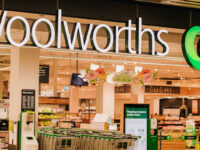Consumer goods brands face a new challenge – and opportunity – in the post-pandemic business era: creating a direct-to-consumer sales channel that drives increased shopper loyalty, greater profitability and sustainable growth.
At the same time, they must continue to deliver efficient order fulfilment with existing legacy retail customers for which they have built their supply chain processes over the years.
The thriving direct-to-consumer (D2C) market – where shoppers buy goods directly from brands via subscription services or ‘brand.com’ online stores – offers huge opportunities for manufacturers. However, succeeding in the complex and unfamiliar D2C landscape depends on creating entirely new supply chain capabilities.
Why D2C is evolving
Since the pandemic – when many consumers were forced to shop online, unable to visit stores in person due to movement restrictions – online retailers have capitalised on the shift offering subscriptions for repeat purchases of FMCG products like toilet paper, coffee, dog food and other essentials.
“The internet has transformed into a global storefront where smaller, more nimble competitors quickly captured share from established CPG brands, many of which have now recognised the need to respond by developing their own D2C business models in parallel with traditional operating models,” explains Ajit Neekhara, senior director for commerce with Blue Yonder, the world leader in digital supply chain transformations and omnichannel commerce fulfilment.
However, to operate in the D2C space, companies must adopt a whole new mindset in order to manage a large volume of smaller-sized customer orders, achieve real-time inventory visibility, and master the complexity of the logistics that comes with flexible fulfilment and last-mile delivery.
Most importantly, D2C sellers need to avoid disappointing consumers who are now, more than ever, extremely demanding and unforgiving than ever – and avoid endangering important relationships with their traditional retail partners.
“The challenge of mastering D2C may seem daunting, but the rewards are well worth it,” says Neekhara. “D2C can fuel manufacturers’ short-term revenues, maximise margins and establish closer shopper relationships that lead to greater satisfaction, loyalty and market share growth over the longer term, regardless of which channel they choose to shop.
“The key to D2C success is leveraging the power of the intelligent supply chain, from order management through final delivery, to accelerate and seamlessly connect the diverse activities involved in direct selling. Many of those functions and activities are new to CPG manufacturers who have traditionally focused on supplying large volumes to retail customers’ distribution centres or stores,” Neekhara explains.
For example, they may need new inventory strategies, regional fulfilment centres or reconfigured transportation networks.
For many brands entering the D2C space, legacy processes and systems that drove traditional go-to-market models are simply too siloed and disconnected to meet the new challenges. D2C creates enormous volumes of orders and data – and end consumers demand seamless, easy online ordering and fast, punctual delivery. Planning for this can exceed the cognitive abilities of human planners, he says.
That’s where Blue Yonder comes in. Enabled by Artificial Intelligence (AI) and Machine Learning (ML), Blue Yonder solutions can easily manage omnichannel complexity – from inventory to order to orchestration and fulfilment – reveal trade-offs, and balance costs and services in a way that leads to long-term success.
These technologies are designed to unlock the power of real-time data and create the end-to-end visibility that’s critical to making optimal decisions across all sales channels.
Blue Yonder helps direct sellers deliver personalised consumer experiences by unifying D2C activities under a single, connected workflow, from browse to fulfilment, with end-to-end visibility and shared insights. The company’s order management and fulfilment solutions determine where inventory should be, for what purpose and delivered by which fulfilment option – based on demand signals, customer service targets and financial objectives.
The solution provides real-time order tracking and updates across the end-to-end supply chain.
“And when exceptions inevitably happen, the powerful, AI-enabled solution suite brings the supply chain back on track quickly, with little to no human intervention,” says Neekhara.
Blue Yonder has produced a guide for manufacturers venturing into the D2C market, Mastering D2C: The Next Frontier for CPG Manufacturers, which you can download here. The guide identified three core challenges:
Providing real-time order visibility: As they compete directly with e-commerce giants like Amazon, CPG companies need to provide consumers with a satisfying shopping experience that’s seamless and transparent at every stage. From the moment they click “buy” until the moment they collect the order, consumers have come to expect real-time visibility and communication.
Supporting flexible fulfilment and delivery: As they fight for market share against established retailers, CPG companies need to offer fast delivery, at no or low cost, along with flexible fulfillment options, because today’s shoppers are used to deciding exactly when and where they want to receive products. This is new territory for manufacturers who must ensure they can deliver on their fulfillment and delivery promises – accurately and profitably.
Managing complexities of smaller orders and bigger volumes: CPG companies used to shipping pallets and truckloads to a limited number of distribution points are now tasked with picking, packing and shipping single products to a seemingly infinite number of homes, offices and other geographically scattered destinations. And as labour shortages continue and shipping charges skyrocket, it becomes even more challenging to act with speed, efficiency, and cost control. Inventory needs to be as close as possible to the consumer, with optimal fulfilment decisions that balance service and margins.
Blue Yonder’s order management and fulfilment solutions – including warehouse, warehouse execution and robotics, micro-fulfilment, transportation and yard management – can ensure manufacturers can overcome these challenges to simultaneously optimise four key facets of the D2C sales model:
Inventory availability: Provide near real-time data on available inventory across the enterprise, with product reservation capabilities.
Commitments & optimisation: Provide pre- and post-order sourcing fulfilment options and delivery dates by using a flexible and configurable approach that aligns to business goals while increasing conversion rates and improving customer satisfaction.
Order orchestration: Manage and orchestrate orders, to ensure a single source of truth for all order transactions and to provide visibility at each step of the order lifecycle improving order and fulfilment accuracy, customer service, and customer satisfaction.
Order fulfilment: Blue Yonder’s solutions streamline the process of accepting, prioritising, picking, packing and delivering orders, while supporting flexible last-mile delivery options.
“With these capabilities, CPG manufacturers are able to align on a shared understanding of cost and service objectives across the supply chain, and drive actions and trade-offs to maximise results,” says Neekhara. “And because Blue Yonder’s solutions can process thousands of transactions per second to provide real-time inventory and available to promise, CPG companies can confidently manage both B2B and B2C channels
with the response time, scale, and performance so volume and inventory allocation are no longer a concern.”
Neekhara says the payback on end-to-end connectivity is enormous. “Customers have increased revenues by up to 10 per cent by improving consumers’ inventory visibility, product availability and fill rates,” he says.
“CPG companies can reduce cart abandonment and grow conversion rates by as much as 14 per cent by creating an urgency to buy, as well as offering delivery speed and convenience options. And Blue Yonder customers can also expect significant margin improvements as they cut costs via AI-driven insights, fact-based decision-making and process efficiencies.”
By reducing promotions, stockouts and oversells, CPG companies can improve margins by up to 5 per cent and they can cut fulfilment costs by as much as 20 per cent as they reduce the number of split shipments, drive down labour costs and minimise the need for expedited shipments.
In closing, Neekhara says it is important to recognise that every company’s D2C challenges, risks and opportunities are different.
“With a broad range of proven solutions that span the supply chain, Blue Yonder stands ready to help all customers achieve their own D2C success story, quickly and cost-effectively.”
- Blue Yonder’s end-to-end, cognitive business platform enables retailers, manufacturers, and logistics services providers to best fulfil customer demand from planning through execution. Find out more here.








